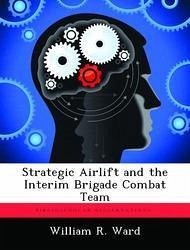Planning is perhaps the most difficult human activity. It is even more problematic when that future is uncertain and the implications of today's decisions endure for years. For the military, planning is particularly consequential, since poor military planning may result not in a poor financial result, but substantial damage to national security. Choices of force structure arguably cast the longest shadow of any military decision. The US Army is embarking on a path of transformation to a future force. Therefore, it is important to examine the underpinnings of the operational concept for this force. At its heart is the desire to increase strategic mobility without sacrificing combat power. The deployment timeline for the lead unit of the transformation, the interim brigade combat team (IBCT), requires airlift. This fact logically leads to the question: "Can the airlift system deploy the IBCT in the timeline required by the operational concept?" The impetus for transformation was a dramatically altered security environment. The 1990s saw the collapse of the Soviet Union, conclusion of the Persian Gulf War, and demands for decreased defense spending. In response, the national security strategy shifted significantly and overseas forces were brought home. This dramatic series of events coupled with an increasingly complex and unpredictable international security environment provided the catalyst. Transformation is the Army's vision to structure itself to operate more effectively in this new security environment. Army force structure has struggled with heavy forces that are too heavy to arrive in time and light forces that are too light to affect the battle. To remedy this shortfall, the Army Chief of Staff proposed a bold vision of a medium weight option, enabled by technology and innovative doctrine, which aspires to full-spectrum dominance through improved strategic mobility without sacrificing lethality or survivability. The basic building is the IBCT, the first of wh
Hinweis: Dieser Artikel kann nur an eine deutsche Lieferadresse ausgeliefert werden.
Hinweis: Dieser Artikel kann nur an eine deutsche Lieferadresse ausgeliefert werden.

